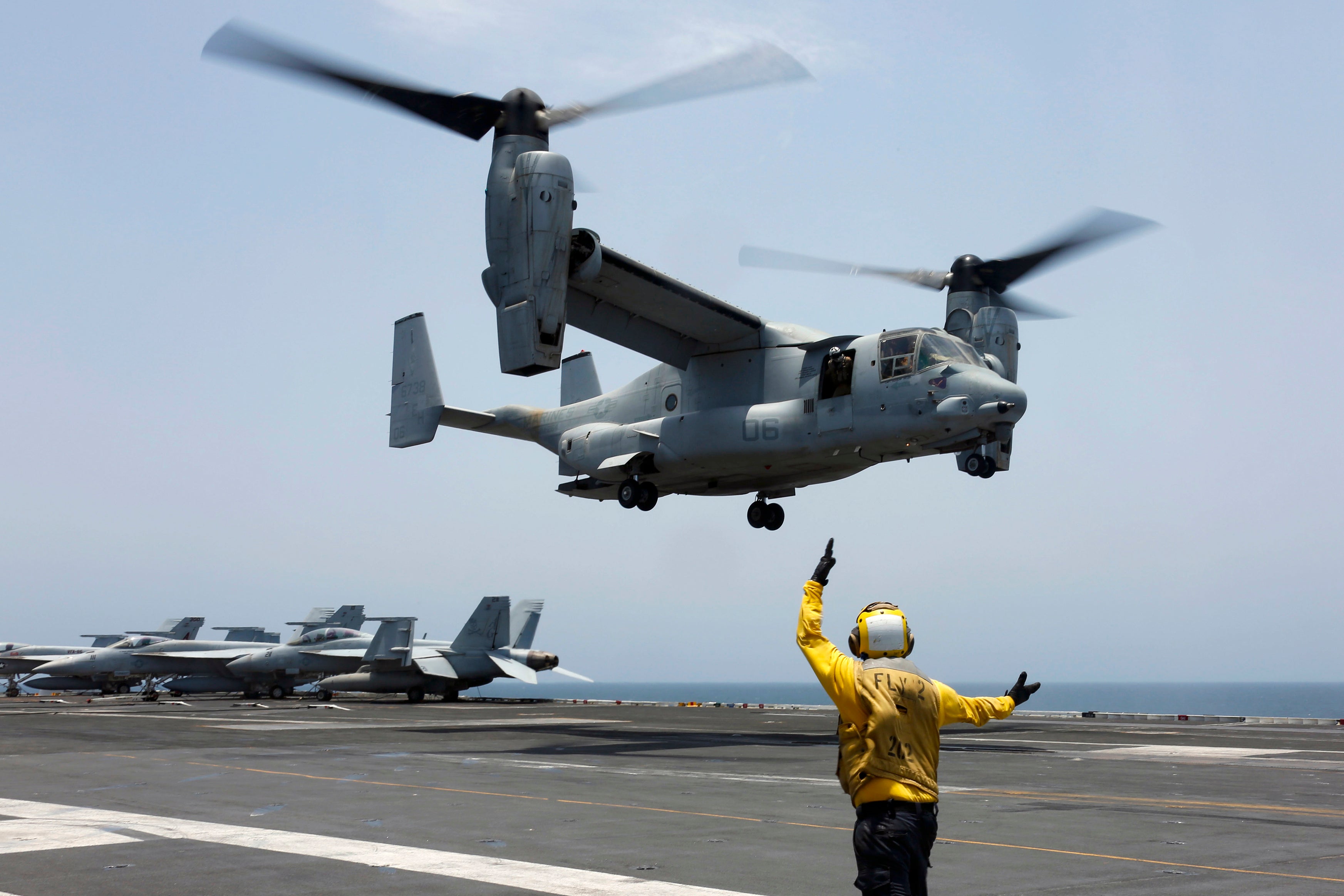US and Japanese forces to resume Osprey flights in Japan following fatal crash
Japanese officials say the U.S. and Japanese militaries will resume flights of Osprey aircraft in Japan after completing necessary maintenance and training following a fatal crash last November

Your support helps us to tell the story
From reproductive rights to climate change to Big Tech, The Independent is on the ground when the story is developing. Whether it's investigating the financials of Elon Musk's pro-Trump PAC or producing our latest documentary, 'The A Word', which shines a light on the American women fighting for reproductive rights, we know how important it is to parse out the facts from the messaging.
At such a critical moment in US history, we need reporters on the ground. Your donation allows us to keep sending journalists to speak to both sides of the story.
The Independent is trusted by Americans across the entire political spectrum. And unlike many other quality news outlets, we choose not to lock Americans out of our reporting and analysis with paywalls. We believe quality journalism should be available to everyone, paid for by those who can afford it.
Your support makes all the difference.The U.S. and Japanese militaries will resume flights of Osprey aircraft in Japan after completing necessary maintenance and training following a fatal crash in southern Japan last November, officials said Wednesday.
The Osprey aircraft, which can take off like a helicopter and then fly like an airplane, has had a troubled history, including numerous crashes.
Japan's Defense Ministry said the two countries have discussed the resumption of Osprey flights in Japan since the U.S. Naval Air Systems Command announced last Friday that the aircraft has been approved to return to service after an “unprecedented” part failure led to the deaths of eight U.S. service members in the crash in Japan.
The entire U.S. Osprey fleet was grounded on Dec. 6, a week after that crash. Japan’s military also grounded all of its 14 Ospreys.
Japan's Defense Ministry said each of the U.S. forces will have separate return-to-flight schedules, and that Japan and the United States have “closely” discussed a timeline for the resumption of Osprey flights in Japan. Aircraft that have completed necessary maintenance and training will return to flight as early as Thursday, the ministry said.
It said the crash was caused by a part problem, not a faulty Osprey design, and that similar problems can be prevented in the future by taking steps to mitigate the identified cause. It did not provide further details.
The Osprey flights will be limited to areas around their bases for the time being, the ministry said, in an apparent effort to address the safety concerns of residents in Okinawa, where most of the U.S. military Ospreys in Japan are deployed. There has been vocal opposition there to the aircraft.
Okinawa is home to Marine Corps Air Station Futenma and its 24 MV-22B Ospreys, and where half of the American troops in Japan are based.
“It would be best if they stay on the ground, as we have all along requested scrapping of the Osprey deployment,” Okinawa Gov. Denny Tamaki said after last week's U.S. announcement.
Japanese Defense Minister Minoru Kihara said the United States had given an “adequate” explanation of the cause of the crash and provided detailed information about the accident.
The crash was the second fatal Osprey accident in months and the fourth in two years. Before clearing the Osprey, U.S. officials said they put increased attention on its proprotor gearbox, instituted new limitations on how it can be flown and added maintenance inspections and requirements that gave them confidence it could safely return to flight.
The officials did not identify the specific component that failed because the Air Force’s crash investigation has not been completed, but said they now have a better — but not complete — understanding of why it failed.